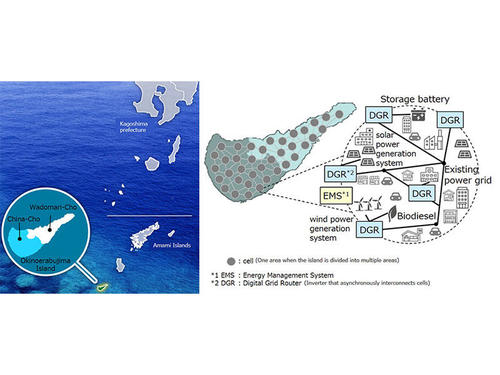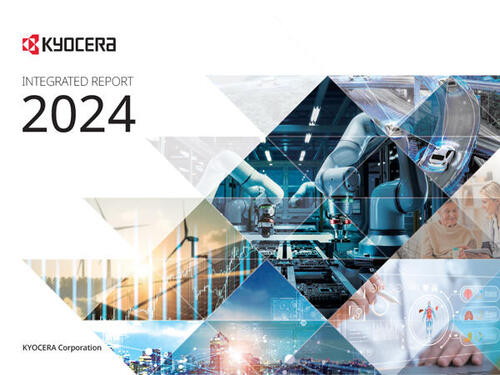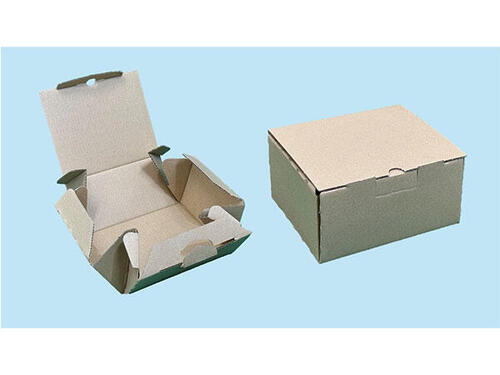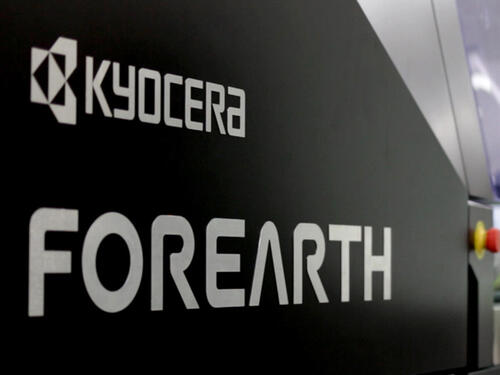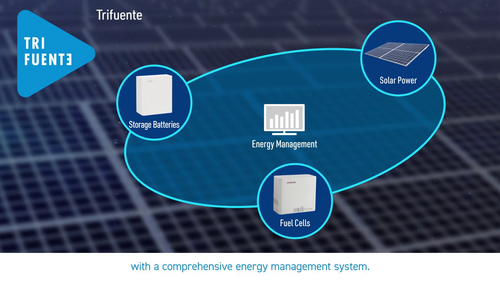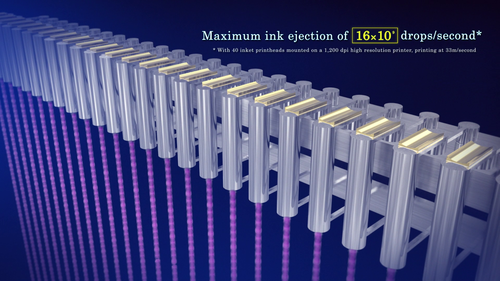
Yasu Kamiya Solar Power Plant (Shiga, Japan)
Kyocera constructed the 150 kW "Yasu Kamiya Solar Power Plant" on 2,000m2 land owned by Yasu City in Shiga. Renewable energy generated at the site will be supplied to the Kyocera Shiga Yasu Plant, approximately two kilometers away via the Kansai Transmission and Distribution, Inc's electrical power grid. This is Japan's first test using a stationary lithium-ion battery to control the site's power generation supply imbalance*2 and enable a stable renewable energy supply while eliminating impact on the grid. In addition, the Supply and Demand Management Center at Kyocera's Tokyo Office will conduct high-precision supply-demand management operations to reduce the plant's demand imbalance*3.
In the future, Kyocera will consider digitizing information obtained from this site and using it to develop various energy-related services.
Through this test, Kyocera aims to establish a self-wheeling energy business model, for which demand is expected to increase in the future, and contribute to a stable and reliable energy supply-demand balancing mechanism. In addition, Kyocera will help realize resilient and sustainable smart cities and microgrids in cooperation with local communities.
*1 Among self-wheeling tests in Japan (Kyocera investigation as of July 1, 2020)
*2 Error between the actual power generated and the power generation forecast that the producer has sent to the general transmission and distribution utility in advance
*3 Error between the actual consumption level and the amount set in the power contract between consumers and power suppliers







